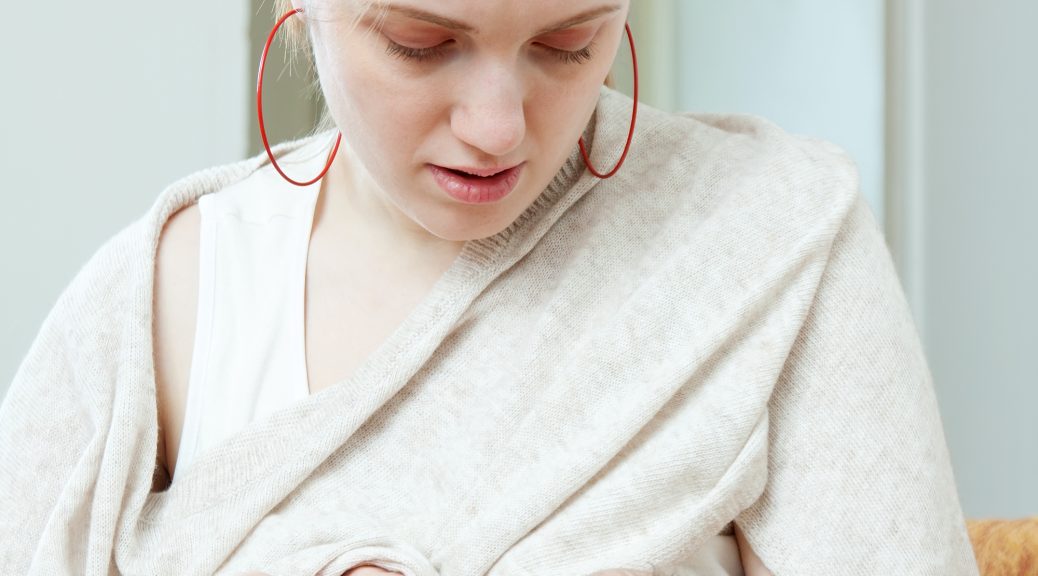
How do I know if I have mastitis?
Mastitis is a word many women have never heard of until they become mothers. In this post, we explain what mastitis is, what different types exist and what causes them. We will explore the consequences and what you should or should not do when the first symptoms appear.
What is mastitis?
Mastitis is an inflammation of one or more areas of the mammary gland that can occur with or without infection. It is one of the most common complications in breastfeeding and one of the main causes of unwanted quitting of breastfeeding. There are two types of mastitis: acute and subacute.
What is acute mastitis?
This type is easily recognizable as the signs are very visible. It starts with discomfort and pain in the breast and a red patch appears on the skin of the breast, which may feel warm and somewhat hard. Later, the toxins of inflammation reach the bloodstream and cause flu-like symptoms: joint pain, general unwellness and fever, which can be quite high.
How do I know if I have subacute mastitis?
It is common to feel pain inside the breast. You may feel deep punctures in the nipple or in that area as if you were stung with needles. You may feel a sense of burning, cramps, pulling, a very uncomfortable feeling. In addition, the nipple and/or areola are often pink in colour.
Why does this happen?
Acute mastitis is caused in most cases by the presence of staphylococcus aureus in the milk, a bacteria that spreads in breastmilk for various reasons: antibiotic treatment before, during or after childbirth, the appearance of sores on the nipple that are a gateway for bacteria, milk retention or poor drainage of the breast. The growth of this or other bacteria in the mammary gland is the cause of mastitis.
Keep in mind that breastmilk contains 2 to 18 different species of bacteria, all of which are essential for the baby. These bacteria form the natural microbiome of the mammary gland in humans. Each women’s breastmilk has a unique bacterial composition, just like a unique fingerprint. But when there is an imbalance in the amount of these bacteria, mastitis symptoms can appear.
I have been told that if I have a fever or mastitis I should stop breastfeeding, is this true?
Unfortunately, some professionals still recommend mothers affected by mastitis or who have a fever, the completely outdated advice to not breastfeed from the affected breast. Under no circumstances should you stop to breastfeed or express milk, rather the opposite, since it is absolutely essential to continue to empty the breast regularly in order to stop and relieve mastitis as soon as possible. And it makes no sense either to throw the expressed breastmilk away because it is not “contaminated” and cannot harm the baby.
What should I do?
In the first 24 hours after the onset of mastitis, it is essential to drain the breast, either directly by your baby, with a breast pump or manually. It is very possible that your baby rejects the affected breast or that little milk comes out when you pump, but don’t give up and drain the breast at least every two hours. Don’t be afraid and don’t hesitate to express breastmilk, this will not increase your milk production, since one effect of mastitis is just the opposite effect, a drop in production.
It is also advisable to apply cold to the affected area. Never apply heat or do it just before breastfeeding, as heat promotes the growth of bacteria and increases inflammation.
It is also very important that you rest or try to rest, just as you would if you would have the flu.
If you have a fever and you want to take fever-reducing medication, you can check on www.e-lactancia.org if it is compatible with breastfeeding.
What should I do if the fever doesn’t go down and I am getting worse?
If you are not getting better after 24 hours since the onset of fever and if the fever increases or does not go down, consult immediately with your doctor or healthcare centre so they can prescribe an appropriate antibiotic. It is very important to address the situation as quickly as possible, to prevent the mastitis from turning into a breast abscess.
If I get a prescription for antibiotics, do I have to stop breastfeeding?
No. As we have said above, it is not advisable at all to stop breastfeeding in case of mastitis. Likewise, it is not necessary to stop breastfeeding in order to take antibiotics. We now know that the vast majority of antibiotics are compatible with breastfeeding, so you can continue to breastfeed and take the medication you need.
I have recurrent mastitis, why?
It is not normal to suffer repeatedly from mastitis. Sometimes, the administration of inadequate antibiotics or unfinished treatments can cause a mother to suffer from mastitis frequently. If this is your case, you can ask for a milk sample to be taken and analysed in the lab to see which bacteria is causing your mastitis, so the right antibiotic can be given to you.
I had mastitis some time ago and now I have a lump in my breast
If any breast lump persists, it is very important to get a proper medical assessment. An ultrasound scan needs to be performed to determine what the lump is. Sometimes, the inflammation caused by mastitis can last a few weeks, and you notice a swollen patch of the breast, but in the case of a round and very firm lump, it is important to check that you don’t have a breast abscess, a very painful complication that occurs after suffering from mastitis that has not been treated correctly and needs surgical intervention.
If you have more questions about mastitis, all things breastfeeding and beyond, please download our free App, LactApp for Android or iPhone to get personalized answers.